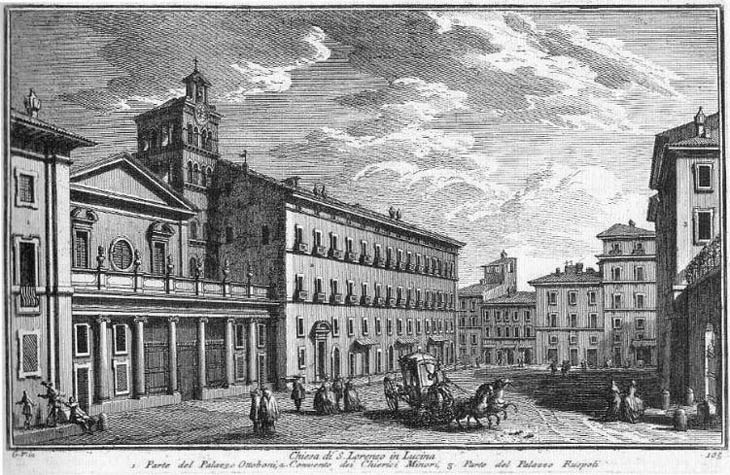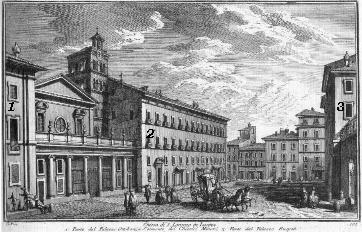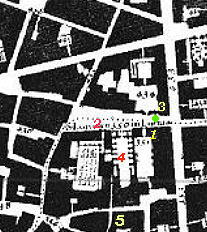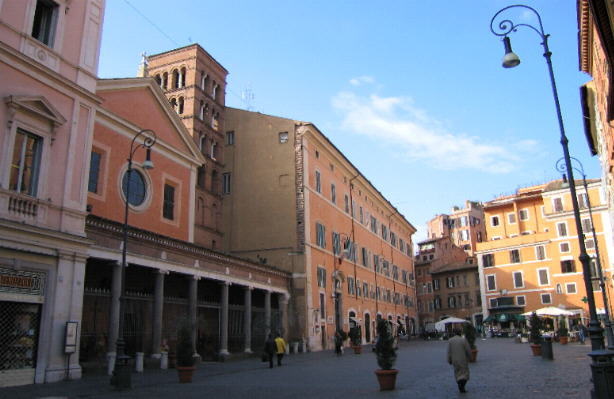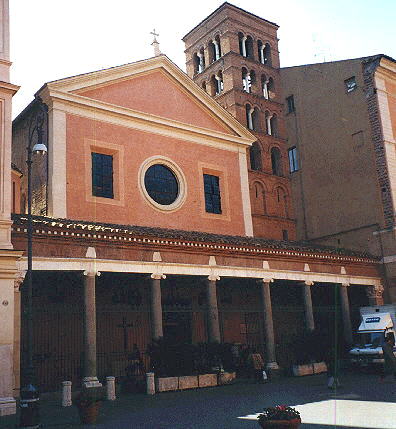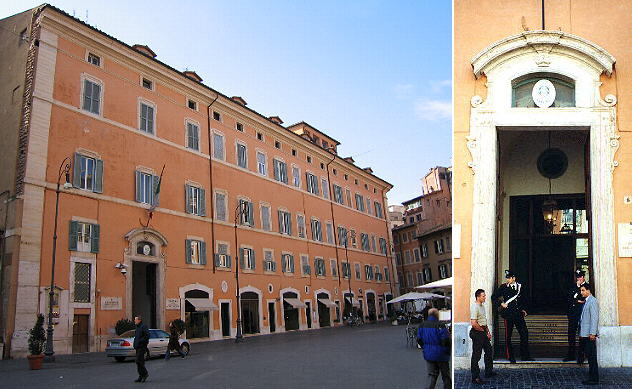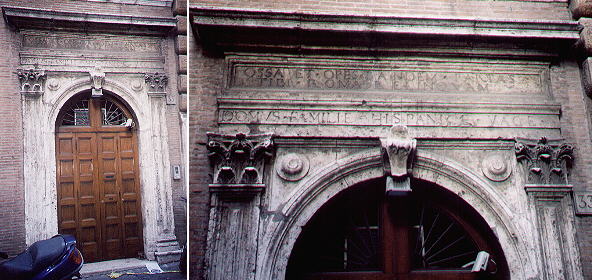  S. Lorenzo in Lucina (Book 6) (Map B2) (Day 1) (View C6) (Rione Colonna) In this page:
The fourth side of the square of S. Lorenzo in Lucina is Via del
Corso. The view is taken from the green dot in the small 1748 map here below.
In the description below the plate Vasi made reference to: 1) Part of Palazzo Ottoboni;
2) Monastery adjoining the church; 3) Part of Palazzo Ruspoli.
1) and 3) are shown in detail in other pages. The small map shows also 4) S. Lorenzo in Lucina; 5) Casa Vacca.
Piazza S. Lorenzo in Lucina freed from cars is a nice place to spend some time, when Via del Corso is busy with shopping crowds. There are some changes, but overall the view is the same.
S. Lorenzo is a very old church, which was altered in 1650. The restoration has eliminated the baroque addition and enhanced its medieval appeal. The columns in particular are very elegant and can be found also in the side walls of the portico (see my background). Inside the church you may wish to see the Monument to Gabriele Fonseca by Gian Lorenzo Bernini.
The adjoining monastery is today occupied by the Carabinieri (one
of the Police forces you can find in Italy) and has retained the original
looks.
The area behind S. Lorenzo in Lucina was largely affected in the early XIXth century by the enlargement
of Palazzo di Montecitorio to accomodate
offices and facilities of the Italian Chamber of Deputies. The buildings along Via della Vignaccia were pulled down
to obtain space for the enlargement. The Renaissance façade of the house of don Pedro de Vaca in that street was rebuilt in
Via di S. Lorenzo in Lucina. Pedro de Vaca was a Spanish nobleman from Valencia
who came to Rome maybe called by the Spanish Pope Alexander VI Borgia. As a matter of fact his coat of arms (a cow)
was very similar to that of the Pope (Vaca, Italian vacca, means cow).
Next plate in Book 6: S. Niccolò de' Perfetti
Go
to |
All images © 1999 - 2003 by Roberto Piperno. Write to romapip@quipo.it
